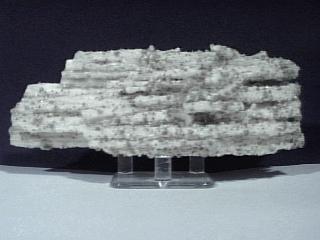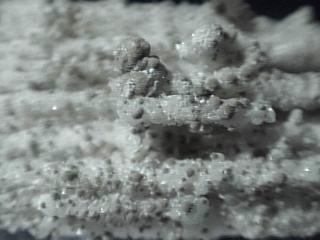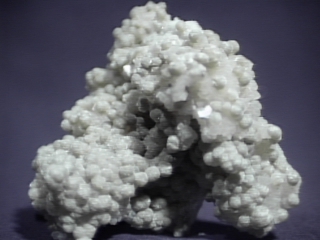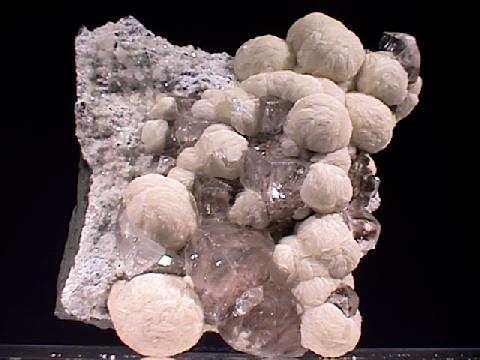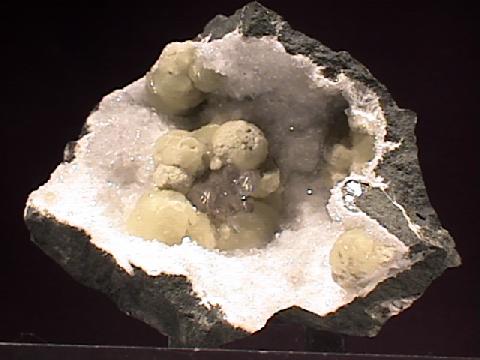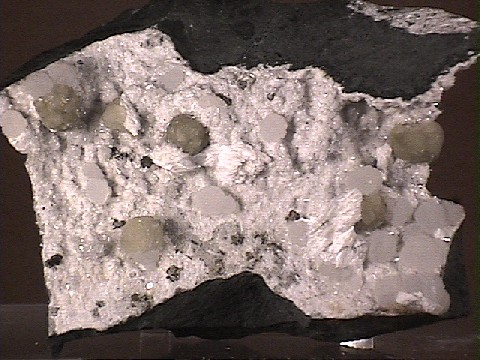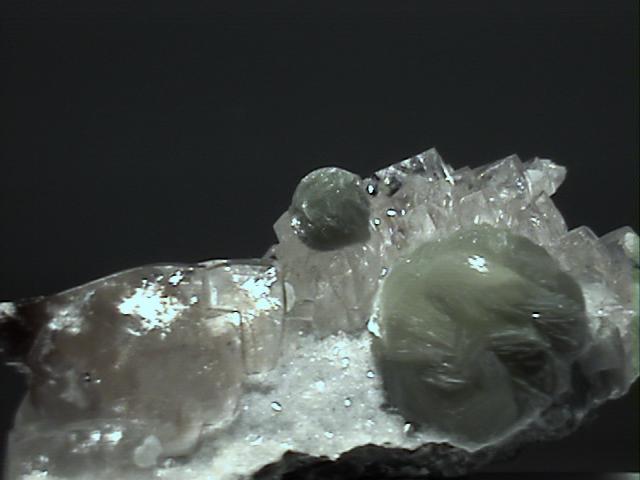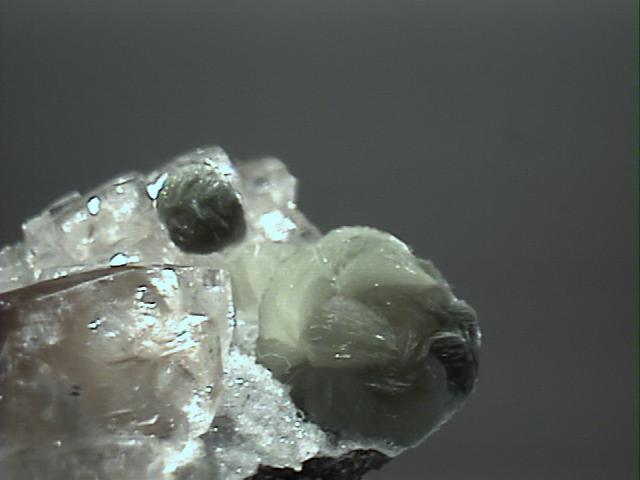 THE MINERAL GYROLITE
THE MINERAL GYROLITE
- Chemistry: Ca2 Si3 O7(OH)2 -H2 O, Hydrated calcium silicate hydroxide.
- Class: Silicates
- Subclass: Phyllosilicates
- Uses: mineral specimen
- Specimens
Gyrolite often forms nodular aggregates.
These aggregates can appear glassy, dull or even fiberous.
Unlike other similar looking minerals (such as
prehnite or
smithsonite), gyrolite usually forms individual nodules as opposed to botryoidal or crustal growths.
The aggregate nodules can often accompany many fine and rare minerals such as
apophyllite, okenite and many of the
zeolites.
Much gyrolite forms inside of volcanic bubbles called vesicles and can only add another element to the surreal "landscape" inside.
PHYSICAL CHARACTERISTICS:
- Color is white or colorless. Also green or brown.
- Luster is vitreous to dull.
- Transparency crystals are transparent to translucent.
- Crystal System is triclinic; bar 1
- Crystal Habits include the nodules described above.
Nodules or concretions are lamellar to fiberous.
- Cleavage is perfect in one direction.
- Fracture is uneven.
- Hardness is 3 - 4.
- Specific Gravity is approximately 2.3+ (below average)
- Streak is white.
- Other Characteristics: lacks the luster of smithsonite and prehnite is usually greener in color.
- Associated Minerals are okenite, apophyllite, quartz, laumontite and other zeolites.
- Notable Occurrences include Poona, India; California and Northern Ireland.
- Best Field Indicators are crystal habit, luster and associations.
 THE MINERAL GYROLITE
THE MINERAL GYROLITE
